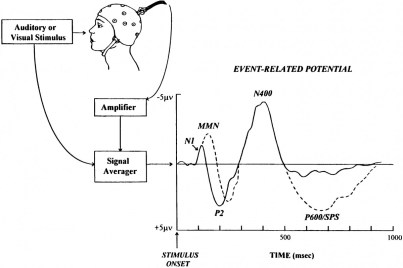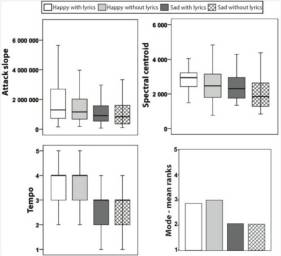“It’s a 20-minute walk,” sighed my American friends, complaining that it was “too long.” It was our first week in Paris on our study abroad program, and we were planning on going to a café. After Google maps indicated that the metro stop was far from the original café, we ended up going to Pause Café. It was on the corner of the street near the ACCENT center, where our daily classes are held.
I was shocked by the lack of energy that we had. Looking around us, Parisians were walking from place to place without breaking a sweat. Walking for twenty minutes, even thirty, was typical for a Parisian. This got me thinking, how different would my life be if I lived in Paris. In Atlanta, shops and restaurants were far apart, sidewalks were narrow, and the city was difficult to explore without a car. But in Paris, everything was nearby, and sidewalks were wide. If I were to walk this much every day for the rest of my life, how would that impact my health?
Exercise is known to have many health benefits. A fact that has been ingrained in my mind since elementary school. What I knew was that exercise could prevent heart attacks and diseases, but not its effect on the brain.
Researchers show that exercise improves memory, specifically our memory of certain places and events (Cassilhas et al., 2016). The anterior hippocampus provides us with the ability to imagine our house and move around our neighborhood (Zeidman and Maguire, 2016). As we get older the hippocampus decreases in volume resulting in increased forgetfulness (Raz et al.,2005). However, there may be a way to halt those effects and possibly reverse them.
Erickson et al. (2011), reveal in their study that physical exercise improves our long-term memory, specifically our navigational memory. By exercising 3 times a week for one-year, participants had an increase in the volume of their anterior hippocampus. However, participants who did not exercise had a decreased anterior hippocampal volume. Overall, the study showed that only the decreased volume in the anterior hippocampus can be reversed with exercise, but not other parts of the hippocampus. This is a well-designed experiment because 120 participants were involved in the study, which makes the results more applicable to the general public by representing different types of people in the population. The differences in the size of the anterior hippocampus can be better observed and statistically tested with this large number of participants. Further, by testing participants prior to the exercise protocol, after 6 months, and after one year, we can look at the effects of exercise on the anterior hippocampal volume both in the short-term and long-term.

Graphs of the increase in the volume of the anterior hippocampus for the exercise group (blue line) compared to the decrease in the volume of the anterior hippocampus for the control (red line), evident in both the left hemisphere and the right hemisphere of the hippocampus.
Writing this now, I regret missing that 20-minute walk because I now know that a little exercise every day goes a long way in improving my memory. This leaves me wondering, is there a certain time frame when I should be exercising after learning new material?
Researchers performed a study to test whether there is an appropriate time to exercise after learning to improve memory recall (Van Dongen et al., 2016). Participants were assigned into three groups; those who exercised immediately, those who exercised after 4 hours and those who did not exercise. They learned to associate a certain object with a location (refer to image below).The researchers then asked the participants to recall that association. The results showed that exercising 4 hours after learning instead of immediately after enhanced participant’s ability to remember those associations compared to those who did not exercise. Hence, properly timed exercise can enhance long-term memory. The researchers strengthen their conclusion by controlling for problems that could affect the results.Such as having half the participants perform the task at 9AM, while the other half perform it at 12PM. This accounts for the differences in performance at different times of the day, which ensures that improvement in memory recall is occurring due to exercise.

Image of task protocol: associating an object with a location. The orange box represents the study phase, while the blue box represents the testing phase.
So, my elementary school teacher was right after all. Exercise is important for a healthy heart and, as it turns out, a healthy memory. Not only does this motivate me to exercise more often, but also, these studies give me hope for new intervention methods for patients with memory recall deficits. An example would be Alzheimer patients, who struggle with navigating the world (Weller et al., 2018). Another would be patients with major depressive disorder, who have memory impairments in encoding and recalling information (Gourgouvelis et al., 2017). It is cases like these that highlight the importance of understanding the impact of exercise on memory.
Now, when my friends and I have the option between using the metro or walking for 20-minutes, we choose the latter. Living in Paris for 4 weeks today, I have assimilated with the Parisian way of life. I am now able to walk in Paris for hours without the slightest soreness in my legs. It has become my new way of life.
References:
Cassilhas, R. C., Tufik, S., & de Mello, M. T. (2016). Physical exercise, neuroplasticity, spatial learning and memory. Cellular and Molecular Life Sciences, 73(5), 975-983.
Erickson, K. I., Voss, M. W., Prakash, R. S., Basak, C., Szabo, A., Chaddock, L., … & Wojcicki, T. R. (2011). Exercise training increases size of hippocampus and improves memory. Proceedings of the National Academy of Sciences, 108(7), 3017-3022.
Gourgouvelis, J., Yielder, P., & Murphy, B. (2017). Exercise promotes neuroplasticity in both healthy and depressed brains: an fMRI pilot study. Neural plasticity, 2017.
Raz, N., Lindenberger, U., Rodrigue, K. M., Kennedy, K. M., Head, D., Williamson, A., … & Acker, J. D. (2005). Regional brain changes in aging healthy adults: general trends, individual differences and modifiers. Cerebral cortex, 15(11), 1676-1689.
Van Dongen, E. V., Kersten, I. H., Wagner, I. C., Morris, R. G., & Fernández, G. (2016). Physical exercise performed four hours after learning improves memory retention and increases hippocampal pattern similarity during retrieval. Current Biology, 26(13), 1722-1727.
Weller, J., & Budson, A. (2018). Current understanding of Alzheimer’s disease diagnosis and treatment. F1000Research, 7.
Zeidman, P., & Maguire, E. A. (2016). Anterior hippocampus: the anatomy of perception, imagination and episodic memory. Nature Reviews Neuroscience, 17(3), 173.











































